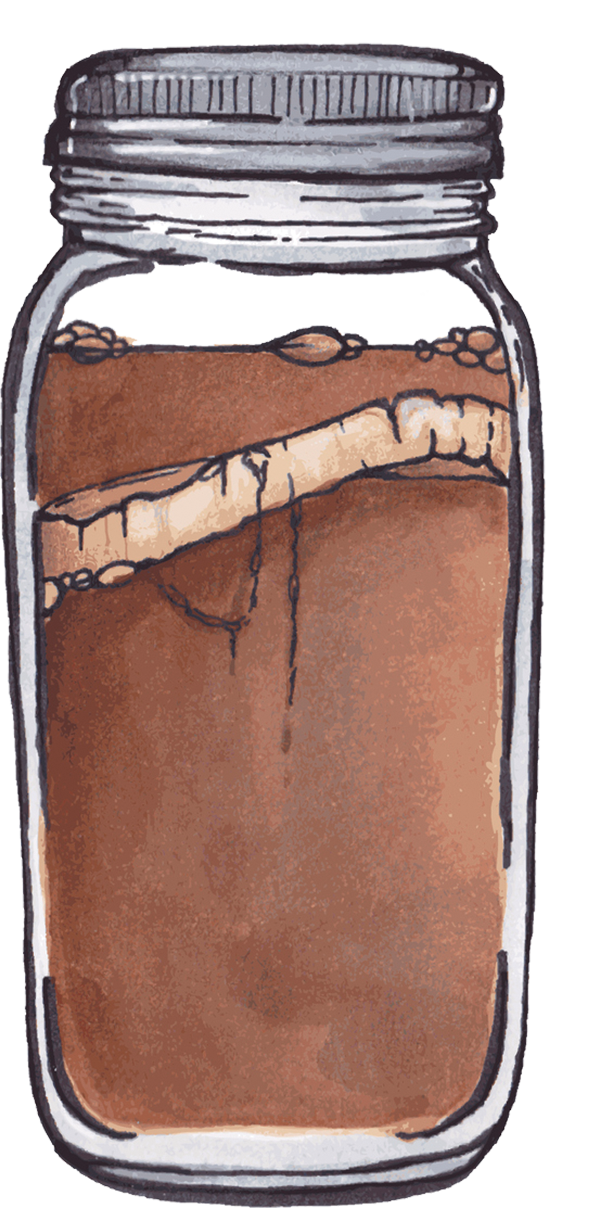
Hidradenitis suppurativa (HS) is a chronic skin disorder characterized by abscesses and scarring around clogged hair follicles, which appear as cysts, blackheads, and nodules.1 While the exact causes of HS are unknown, it is believed to be caused by hormonal imbalance, trapped bacteria in hair follicles, and an over-active immune system.2 HS commonly appears in areas such as the armpits, groin, buttocks, and breasts.1
Risk Factors
There are several risk factors associated with developing and worsening of the condition. Many patients with HS are overweight and/or smoke cigarettes,3–7 which can worsen symptoms.1 The condition is three times more prevalent in women and occurs more frequently in Black individuals.8,6,7
Smoking. A study by Revuz et al3 published in the Journal of the American Academy of Dermatology analyzed risk factors for HS among 302 participants and found that smoking is a primary risk factor for this skin disease. Among the study controls, smoking was notably more prevalent, with over 70 percent of patients with HS reporting smoking.9 The researchers discovered that smoking is a strong trigger for HS3,5 because it disrupts immune function and sweat gland activity.10,5
In a study conducted by Sartorius et al,11 smokers were found to have stronger disease severity compared to non-smokers, as assessed by the Modified Hidradenitis Suppurativa Score (HSS) which evaluates the number of affected body areas and the extent of skin affected by the lesions, and whether the lesions are broken up by areas of normal skin. A total of 115 patients were scored, with primary factors such as body mass index (BMI) and tobacco use considered as overall risk factors.12,11
Cigarettes’ various chemicals, including nicotine, benzopyrene, and arsenic-like substances can negatively impact receptors in hair follicles and sebaceous glands causing the skin to thicken and block pores.12,13 Tobacco also directly affects how much sweat the body produces, thereby clogging the sweat glands and further contributing to more severe cases of HS.12,14
Obesity. Multiple studies looking at HS and obesity have reported a strong link between BMI and increased disease severity.3,11,15–17 In turn, the literature indicates that HS is notable more common among people with obesity than among those who do not have obesity.15,18
Revuz et al3 discovered that overweight is a primary risk factor for HS; the researchers discovered that each small increase in BMI led to a higher risk of HS, suggesting that overweight and obesity are significant risk factors.3,9
Research also indicates that obesity and HS are closely linked, with contributing factors such as sweat retention and disrupted hormone regulation serving as triggers for HS. Sweating and skin-to-skin contact causes shearing which can lead to hair follicles becoming blocked. Keratin hydration within sweat glands is stimulated by skin-to-skin contact, reducing the diameter of the follicular orifice and leading to pore clogging. Obesity also impacts hormonal metabolism, leading to an excess of androgens, which can cause hair shafts to thicken, thereby contributing to pore clogging.19,20,5
Rates of obesity are higher among patients with HS compared to the general population;21 however, researchers have not yet identified a specific association.12 A study conducted by Wright et al22 analyzed 2,384 patients with HS and discovered that the participants’ baseline BMIs were significantly higher compared to the control subjects, with the most differences reported among women compared to men.
Common Misconceptions
Because of the areas of skin it affects, HS is often mistaken for acne, folliculitis, or a sexually transmitted infection; however, HS is neither contagious nor caused by poor hygiene.23,24 Many myths surrounding the causes of HS include false beliefs that it is caused by poor hygiene, antiperspirant use, or chemical hair removal.10 A study published in the journal Archives of Dermatology examined whether shaving, chemical hair removers, deodorants, and talcum powder used in the armpit and groin regions are directly linked to the development of HS. Forty patients with matched controls were analyzed, and no significant differences were observed with the various products in either patients with HS or patients without HS.25
Comorbidities
Psychiatric disorders. Patients with HS are likely to experience depression.15,26–30 Compared to other skin conditions, individuals with HS often experience more severe depression, with strong links between higher depression levels and the severity of both the disease and its associated inflammation.15,26,30 Other psychiatric conditions such as anxiety, schizophrenia, and bipolar disorder have also been reported in patients with HS.15,29
Substance use disorder. Due to the pain and emotional distress often experienced by patients with HS, the literature suggests these patients are at increased risk for substance use disorders, particularly with alcohol and opioids.31 A study looking at 32,000 patients with HS found the prevalence of substance use disorder to be 4.0 percent, in comparison to 2.0 percent in the control group.31,32 A separate study which looked at 20,000 patients with HS found the one-year incidence of chronic opioid use among opioid-naive patients with HS was 0.3 percent, twice the amount of the control group. Overall, the researchers found that patients with HS were at 1.5 times increased risk of chronic opioid use.33,31
Treatment Options
Mild cases of HS can be treated with topical clindamycin 1%. Numerous clinical trials have reported the efficacy of this treatment. A total of 30 patients with recurrent HS participated in a trial with the control group experiencing significant improvement in reducing the number of abscesses, inflammatory nodules, and pustules, compared to the placebo group.34,35
For patients with severe HS, systemic antibiotics such as doxycycline taken once or twice daily, minocycline taken once or twice daily, or tetracycline taken twice daily, have proven to be effective.34,35 Other options for refractory cases include tumor necrosis factor (TNF)-alpha inhibitors. Clinical trials have demonstrated effectiveness in reducing HS symptoms and preventing the development of new lesions, with participants experiencing at least a 50-percent reduction in abscesses and inflammatory nodules, and no new abscesses or draining fistulas.37
Surgery to remove lesions is appropriate for patients with either Stage II or III HS, particularly for cases involving lesions over considerable areas of the body. Surgical options include local destruction, electrosurgery, and photodynamic therapy to name a few. In severe cases, complete removal of the affected areas may be performed with skin grafting.34,38
Sources
- National Health System UK. Hidradenitis suppurativa (HS). Reviewed 17 Mar 2023. Accessed 22 Apr 2025. https://www.nhs.uk/conditions/hidradenitis-suppurativa/
- British Association of Dermatologists. Hidradenitis suppurativa. Updated Mar 2025. Accessed 29 Apr 2025. https://www.bad.org.uk/pils/hidradenitis-suppurativa/
- Revuz JE, Canoui-Poitrine F, Wolkenstein P, et al. Prevalence and factors associated with hidradenitis suppurativa: results from two case-control studies. J Am Acad Dermatol. 2008;59(4):596–601.
- Freiman A, Bird G, Metelitsa AI, et al. Cutaneous effects of smoking. J Cutan Med Surg. 2004;8(6):415–423.
- Alotaibi HM. Incidence, risk factors, and prognosis of hidradenitis suppurativa across the globe: insights from the literature. Clin Cosmet Investig Dermatol. 2023;16:545–552.
- Homma H. On apocrine sweat glands in White and Negro men and women. Bull John Hopkins Hosp. 1926;38:365–371.
- Duncan WC. Surgical treatment of hidradenitis suppurativa. J Dermatol Surg. 1976;2(2):153–157.
- Mustafa EB, Ali SD, Kurtz LH. Hidradenitis suppurativa: review of the literature and management of the axillary lesion. J Natl Med Assoc. 1980;72(3):237–243.
- Revuz J. Hidradenitis suppurativa. J Eur Acad Dermatol Venereol. 2009;23(9):985–998.
- Slade DEM, Powell BW, Mortimer PS. Hidradenitis suppurativa: pathogenesis and management. Br J Plast Surg. 2003;56(5):451–461.
- Sartorius K, Emtestam L, Jemec GBE, et al. Objective scoring of hidradenitis suppurativa reflecting the role of tobacco smoking and obesity. Br J Dermatol. 2009;161(4):831–839.
- Rosi E, Fastame MT, Silvi G, et al. Hidradenitis suppurativa: the influence of gender, the importance of trigger factors and the implications for patient habits. Biomedicines. 2022;10(11):2973.
- Hana A, Booken D, Henrich C, et al. Functional significance of non-neuronal acetylcholine in skin epithelia. Life Sci. 2007;80(24–25):2214–2220.
- Nazary M, van der Zee HH, Prens EP, et al. Pathogenesis and pharmacotherapy of hidradenitis suppurativa. Eur J Pharmacol. 2011;672(1–3):1–8.
- Vinkel C, Thomsen SF. Hidradenitis suppurativa: causes, features, and current treatments. J Clin Aesthet Dermatol. 2018;11(10):17–23.
- Zouboulis CC, Desai N, Emtestam L, et al. European S1 guideline for the treatment of hidradenitis suppurativa/acne inversa. J Eur Acad Dermatol Venereol. 2015;29(4):619–644.
- Canoui-Poitrine F, Revuz JE, Wolkenstein P, et al. Clinical characteristics of a series of 302 French patients with hidradenitis suppurativa, with an analysis of factors associated with disease severity. J Am Acad Dermatol. 2009;61(1):51–57.
- Sabat R, Chanwangpong A, Schneider-Burrus S, et al. Increased prevalence of metabolic syndrome in patients with acne inversa. PLoS One. 2012;7(2):e31810.
- Jansen T, Plewig G. What’s new in acne inversa (alias hidradenitis suppurativa)? J Eur Acad Dermatol Venereol. 2000;14(5):342–343.
- Wiseman MC. Hidradenitis suppurativa: a review. Dermatol Ther. 2004;17(1):50–54.
- Silfvast-Kaiser A, Youssef R, Paek SY. Diet in hidradenitis suppurativa: a review of published and lay literature. Int J Dermatol. 2019;58(11):1225–1230.
- Wright S, Strunk A, Garg A. Trends in body mass index before and after diagnosis of hidradenitis suppurativa. Br J Dermatol. 2021;185(1):74–79.
- Ludmann P. Hidradenitis suppurativa: overview. American Academy of Dermatology Association. Updated 3 May 2022. Accessed 29 Apr 2025. https://www.aad.org/public/diseases/a-z/hidradenitis-suppurativa-overview
- HS Foundation. 6 myths about hidradenitis suppurativa (HS). 2025. Accessed 29 Apr 2025. https://www.hs-foundation.org/fact-or-fiction
- Morgan WP, Leicester G. The role of depilation and deodorants in hidradenitis suppurativa. Arch Dermatol. 1982;118(2):101–102.
- Matusiak L, Bieniek A, Szepietowski JC. Psychophysical aspects of hidradenitis suppurativa. Acta Derm Venereol. 2010;90(3):264–268.
- Vazquez BG, Alikhan A, Weaver AL, et al. Incidence of hidradenitis suppurativa and associated factors: a population-based study of Olmsted County, Minnesota. J Invest Dermatol. 2013;133(1):97–103.
- Onderdijk AJ, Van Der Zee HH, Esmann S, et al. Depression in patients with hidradenitis suppurativa. J Eur Acad Dermatol Venereol. 2013;27(4):473–478.
- Shavit E, Dreiher J, Freud T, et al. Psychiatric comorbidities in 3207 patients with hidradenitis suppurativa. J Eur Acad Dermatol Venereol. 2015;29(2):371–376.
- Kurek A, Johanne Peters EM, Sabat R, et al. [Depression is a frequent co-morbidity in patients with acne inversa]. J Dtsch Dermatol Ges. 2013;11(8):743–749, 743–750. Article in German.
- Garg A, Malviya N, Strunk A, et al. Comorbidity screening in hidradenitis suppurativa: evidence-based recommendations from the US and Canadian Hidradenitis Suppurativa Foundations. J Am Acad Dermatol. 2022;86(5):1092–1101.
- Garg A, Papagermanos V, Midura M, et al. Opioid, alcohol, and cannabis misuse among patients with hidradenitis suppurativa: a population-based analysis in the United States. J Am Acad Dermatol. 2018;79(3):495–500.e1.
- Reddy S, Orenstein LAV, Strunk A, et al. Incidence of long-term opioid use among opioid-naive patients with hidradenitis suppurativa in the United States. JAMA Dermatol. 2019;155(11):1284–1290.
- Nesbitt E, Clements S, Driscoll M. A concise clinician’s guide to therapy for hidradenitis suppurativa. Int J Womens Dermatol. 2019;6(2):80–84.
- Clemmensen OJ. Topical treatment of hidradenitis suppurativa with clindamycin. Int J Dermatol. 1983;22(5):325–328.
- Alhusayen R, Shear NH. Scientific evidence for the use of current traditional systemic therapies in patients with hidradenitis suppurativa. J Am Acad Dermatol. 2015;73(5 Suppl 1):S42–S46.
- Kimball AB, Okun MM, Williams DA, et al. Two phase 3 trials of adalimumab for hidradenitis suppurativa. N Engl J Med. 2016;375(5):422–434.
- Danby FW, Hazen PG, Boer J. New and traditional surgical approaches to hidradenitis suppurativa. J Am Acad Dermatol. 2015;73(5 Suppl 1):S62–S65.




